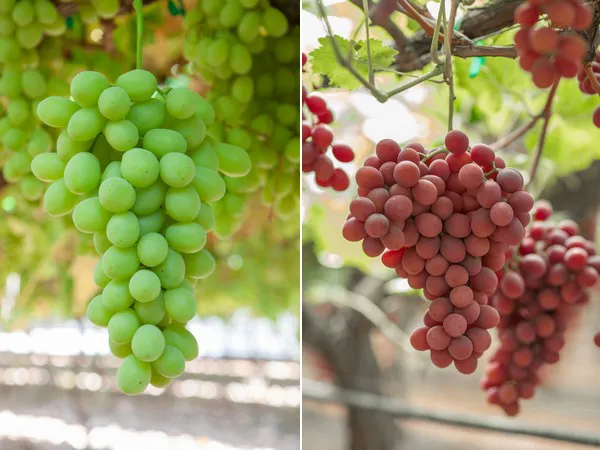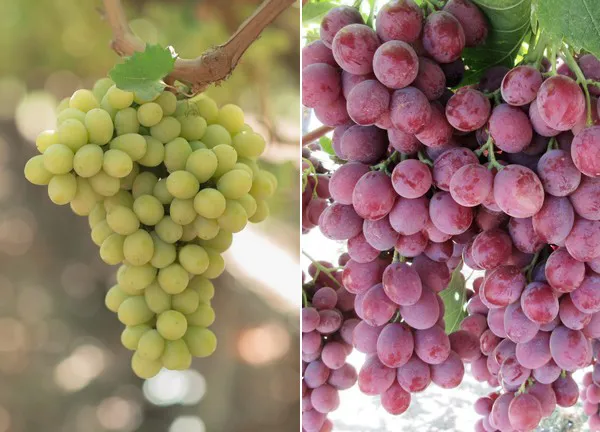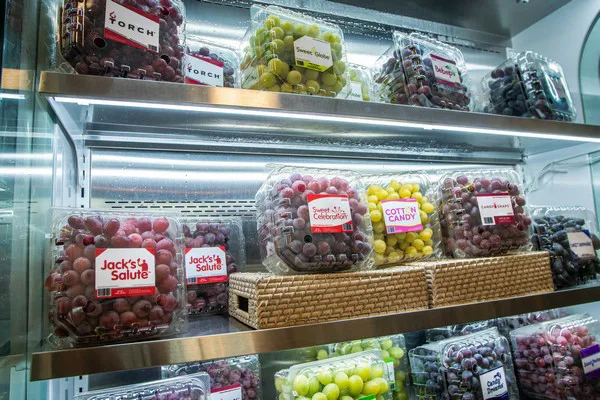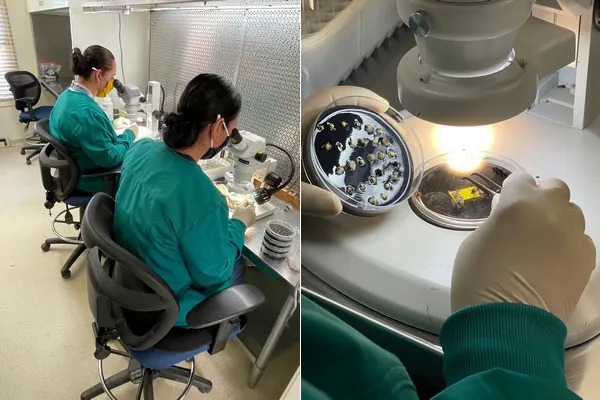 Creating an incredible eating experience. That’s the mission of table grape breeding company IFG. “We start with the consumer and then work our way backwards,” says Andy Higgins, the company’s CEO. “If we can’t create an incredible eating experience for the consumer, we feel we’ve failed,” he added.
Creating an incredible eating experience. That’s the mission of table grape breeding company IFG. “We start with the consumer and then work our way backwards,” says Andy Higgins, the company’s CEO. “If we can’t create an incredible eating experience for the consumer, we feel we’ve failed,” he added.
During the breeding process, the company tracks 45 different traits. Berry weight, yield, disease resistance, and storability are some key characteristics. “However, from a consumer perspective we also look at how well the grape accumulates sugar and what the eating profile is at maturity. In that process, the company heavily relies on consumer panels and internal testing teams.”
Snacking category
It takes about 10 years to develop a new grape variety and once planted, it takes a couple more years for the fruit to be sold commercially. “That brings us to one of the biggest challenges our R&D team is faced with. We need to predict what consumer eating trends are going to be 10 years down the road,” Higgins commented. With that in mind, the company constantly follows consumer trends and tries to understand demographics. “We’ve learned that younger consumers are looking for things to eat that are sweeter, requiring us to look at trends in the snacking category. These trends have taught us that among younger consumers, there is room for flavored varieties like Cotton Candy™.”
Providing choice
Altogether, IFG has 47 patented commercial table grape varieties available for the market and the top 5 might make up about 80 percent of the volume. Is there room for all these varieties in the market? According to Higgins the short answer is yes. “All these varieties are pushing the envelope on consumer experience, but growers and marketers may pick a variety for other reasons.” They look at how well the variety does in a certain climate and whether it is an early or late variety that may help extend their marketing window. “There is no perfect variety, and we believe providing choice is important.”
In general, the commercial varieties can be broken down into two flavor categories: neutral and novelty grapes. Neutral varieties taste like you would expect a grape to taste and make up more than half of table grape production around the world. One of the most popular varieties from IFG is Sweet Globe™. “It’s a green, seedless grape variety with a low acidity level. It provides an incredible eating experience and performs well in each growing region in the world,” Higgins said. The number one most popular red variety is Sweet Celebration™. It has a higher sugar/acid ratio than Sweet Globe and it’s easy to keep going back for more. It’s the second most widely planted table grape variety across the globe.
 Sweet Globe and Sweet Celebration grapes.
Sweet Globe and Sweet Celebration grapes.
Novelty grapes on the other hand have different flavors and shapes than traditional neutral grapes. “They fall outside the category of what the average consumer considers to be a grape,” Higgins mentioned. “They target consumers who are interested in trying something new.” The most popular novelty variety today is Cotton Candy™. It was the first variety in the highly flavored novelty category to hit the market. “We are seeing this variety doing particularly well with consumers that are familiar with the cotton candy snack.” Candy Snaps™, a strawberry flavored grape, is also very popular and Higgins is very proud of Candy Hearts™ because of its aroma. “It has a wonderful, pleasant smell that sometimes results in the grapes being sold out in a few hours after having been put on the shelf.” A variety that is not available in stores yet but registers the highest scoring in consumer panels ever is the Bebop™ variety. It looks like it will be a good production grape but won’t be available for the next 1.5 years.
 Cotton Candy and Bebop grapes.
Cotton Candy and Bebop grapes.
Generic packaging doesn’t work long-term
In terms of packaging, there is a trend towards more generic packaging without identification. “Some retailers push for only generic packaging, and I feel it is a missed opportunity,” said Higgins. “I think this trend is short lived as consumers increasingly identify with the food they eat. They want to know the variety they are eating and the country of origin. Being able to communicate that is highly valuable to the consumer.”
There is also a trend towards smaller packaging for smaller households. “In Europe for instance, we see grapes being sold in 250-gram punnets as well as clamshells. In the US on the other hand, the vast majority of grapes are still sold in pouch bags.” Higgins feels the trend towards clamshells is a good one as the fruit is better protected in light of COVID. More importantly, clamshells offer clarity in pricing and consumers know upfront what they will be paying. Grapes in pouch bags are usually sold per pound, potentially resulting in surprises at the register. Clamshells are also much easier for self-checkout. In the US, club stores often sell grapes in clamshells and there is a trend switching from 4 lbs. towards 3 lbs. clamshells.
 Grapes in clamshells.
Grapes in clamshells.
Consistency across growing countries
The breeding process of all of IFG’s varieties starts at the company’s lab in Delano, in California’s Central Valley. From there, a selected number of varieties are trialed in other countries including Peru, Chile, South Africa, Australia, Italy, and Spain. “We breed varieties that provide consistency across all growing regions as retailers are looking for a grape that provides consistency across supply regions year-round. From a grower’s perspective, we don’t want them having to change varieties, so our best performing varieties need to be able to grow in every country and provide consistency over the long term,” concluded Higgins. At the moment, IFG has licensees in 14 different countries around the globe.

 For more information:
For more information:
Tamara Baker
IFG
[email protected]
www.ifg.world










